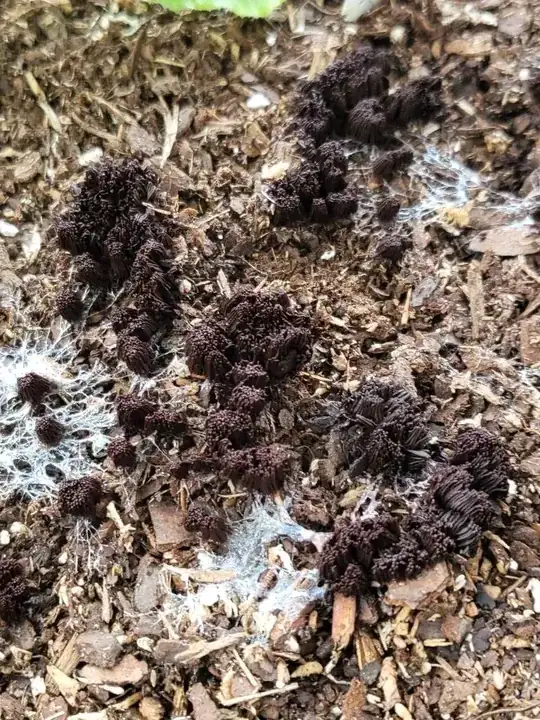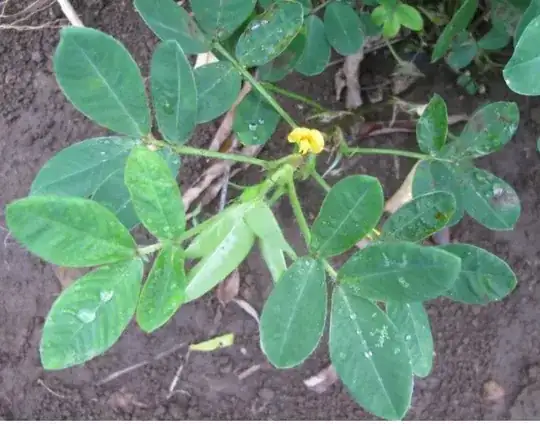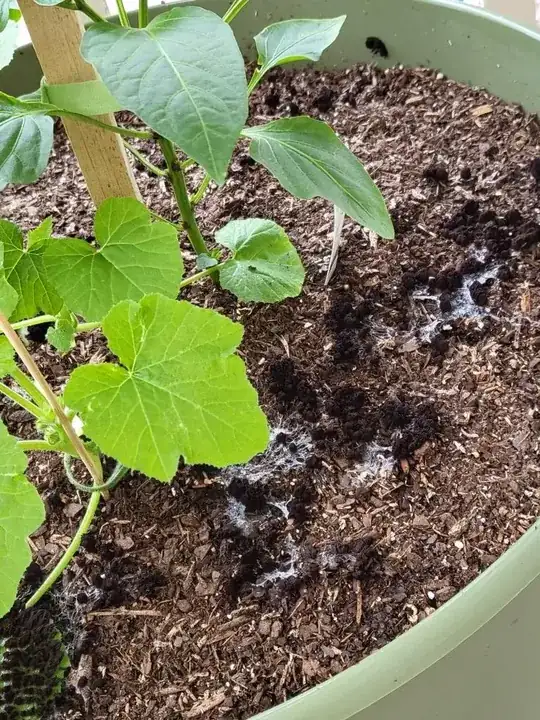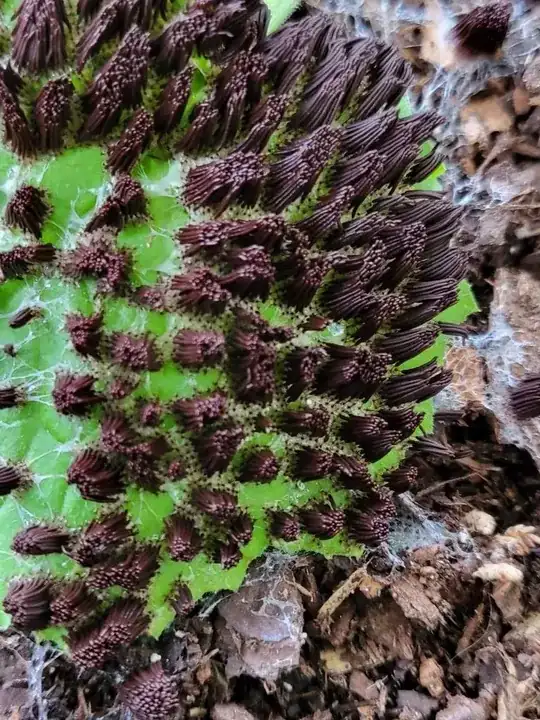I live in the Florida panhandle, and I have two 20" flowerpots with two tomato plants in the first pot and a bell pepper and three zucchini plants in the other. They are on a south-facing balcony but only get partial sun because of the porch pickets.
Yesterday I noticed a strange fungus (slime mold) covering the bottom third of a small, fuzzy Easter bunny ornament glued to a wooden skewer, pushed into the dirt near the edge of one of the containers. After removing and discarding the decoration, I scraped off the remainder growing on the surrounding soil and the side of the container. I scooped out the contaminated dirt and spores, or so I thought.
This morning, I noticed the fungi (slime mold) had reappeared overnight, spreading rapidly and covering much of the soil surface and some of the lower zucchini leaves. The appearance could be described as clumps of dark brown, almost black, cylindrical rods jutting up from a network of translucent webbing (mycelia), which coat the soil's surface. These rods, while tightly grouped, are each distinct from one another, appearing almost as if they were the fossilized tentacles of some ancient sea anemone.
I spent over an hour online trying to identify what is plaguing my precious veggies. I even tried using Bixby Vision and Google Lens to match my images with similar photos online. Still, I saw nothing conclusive in the search results.
I suspect it may be a mulch fungus since the containers are filled with Sta-Green Potting Soil Mix, a low-budget potting soil comprised mainly of finely shredded bits of bark and mulch. Does anyone know what type of fungus or mold this is and whether I need to be worried about it killing off my plants or making them toxic to eat?



